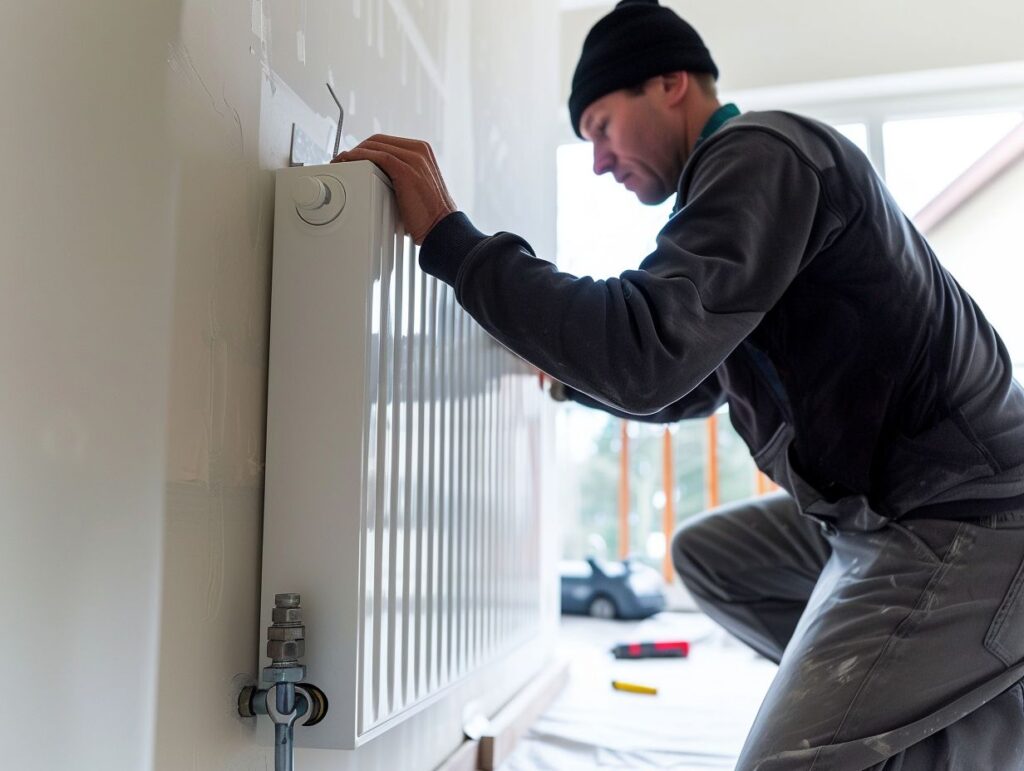When upgrading your home heating system with contemporary radiators, it is crucial to consider several key factors before proceeding with the installation process. Factors such as the size and placement of the radiators, their heating capacity, and energy efficiency all play a significant role in determining the functionality and aesthetic of your space.
This article aims to delve into the installation considerations, provide a step-by-step guide, offer maintenance tips, and outline the benefits of selecting contemporary radiators for your home.
Key Takeaways:
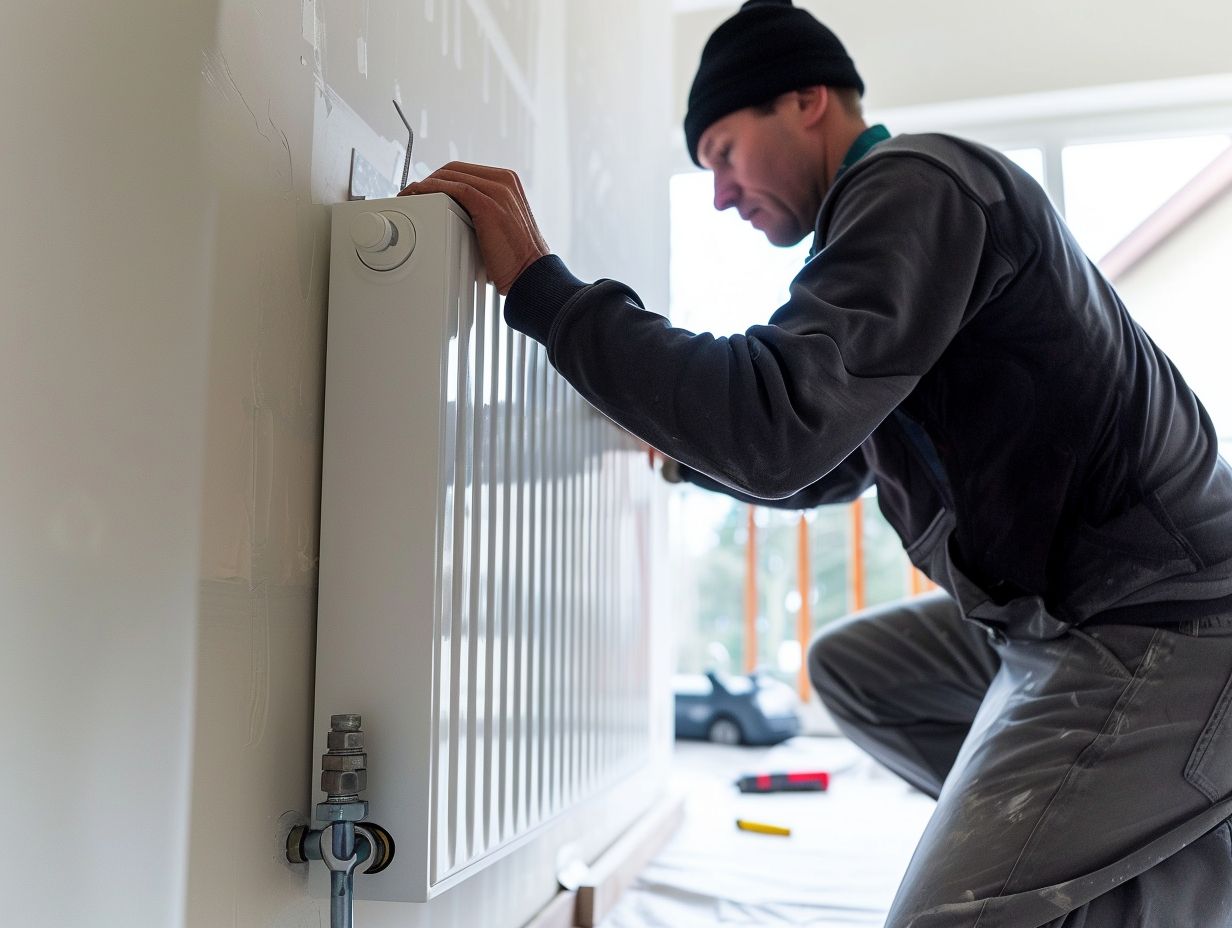
- Proper size and placement are crucial when considering installation of contemporary radiators to ensure optimal heating and space utilization.
- When installing contemporary radiators, it is important to consider their heating capacity and energy efficiency to ensure cost savings and environmental sustainability.
- Contemporary radiators not only serve as functional heating systems, but also add a touch of design and aesthetic to any space. Prioritize choosing a design that complements your overall interior design.
Factors to Consider Before Installation
Before proceeding with the installation of contemporary radiators, you should consider various factors such as the type of radiator valve needed, the fitting requirements, and the overall installation process. These considerations are essential to ensure a smooth and efficient installation that meets both functional and design requirements.
Selecting the appropriate valve for the radiator is crucial as it plays a significant role in controlling the flow of hot water into the radiator, thus impacting its heating efficiency.
Various types of radiator valves are available, including thermostatic radiator valves (TRVs) that enable you to regulate the temperature in individual rooms.
Understanding the fitting process involves confirming compatibility between the valve and the radiator model. Proper preparation, such as checking for leaks or rust, is also critical before initiating the installation.
Size and Placement
When determining the size and placement of contemporary radiators, you must start by taking accurate measurements of the available wall-space and identifying the centre line for optimal positioning. Ensuring proper sizing and placement is crucial for achieving efficient heating distribution and enhancing the overall aesthetic of the space.
To accurately measure the wall-space, begin by using a tape measure to ascertain the width and height dimensions of the area where the radiator will be installed. Remember to consider any obstacles like windows, doors, or furniture that could affect the placement.
Locating the centre line is essential for achieving balanced heat output throughout the room. Incorrect sizing or placement may result in uneven heating, causing some areas to be uncomfortably warm while others remain chilly, impacting both comfort levels and energy efficiency.
It’s imperative to evaluate the heating requirements of the room to ensure that the selected radiator has the appropriate capacity to effectively warm the space without overburdening the system. Opting for a radiator that complements the style and décor of the room can elevate the visual appeal, establishing a cohesive and welcoming atmosphere.
Heating Capacity and Energy Efficiency
When assessing the heating capacity and energy efficiency of contemporary radiators, it is crucial to consider various factors to ensure optimal performance and cost-effectiveness.
Understanding the BTU (British Thermal Units) ratings and efficiency standards of different radiator types is key to selecting the most appropriate option for efficient heating.
BTU, a unit of measurement indicating the amount of heat energy required to raise the temperature of a pound of water by one degree Fahrenheit, is a fundamental aspect to consider.
The BTU rating of a radiator reflects its heating output capacity, assisting homeowners in choosing the suitable model based on the size of the room or space to be heated.
Several factors, such as radiator size, design, material, and configuration, significantly influence the efficiency of heat distribution and retention. Striking a balance between heating performance and energy-saving features is essential when selecting radiators to optimise comfort while minimising energy costs.
Different radiator types, including panel radiators, column radiators, and towel radiators, vary in their ability to emit heat efficiently and maintain consistent warmth in a room.
Panel radiators are recognised for their fast heat distribution, while column radiators offer a timeless aesthetic appeal and excellent heat retention. Towel radiators, commonly used in bathrooms, not only provide warmth but also a convenient place to dry towels.
Efficiency ratings, such as the European Energy Label, enable consumers to assess radiator models based on their energy consumption levels and heat output.
By considering factors like room size, insulation quality, heating requirements, and personal preferences, individuals can make well-informed decisions when selecting radiators that best match their heating needs while promoting energy efficiency.
Design and Aesthetic
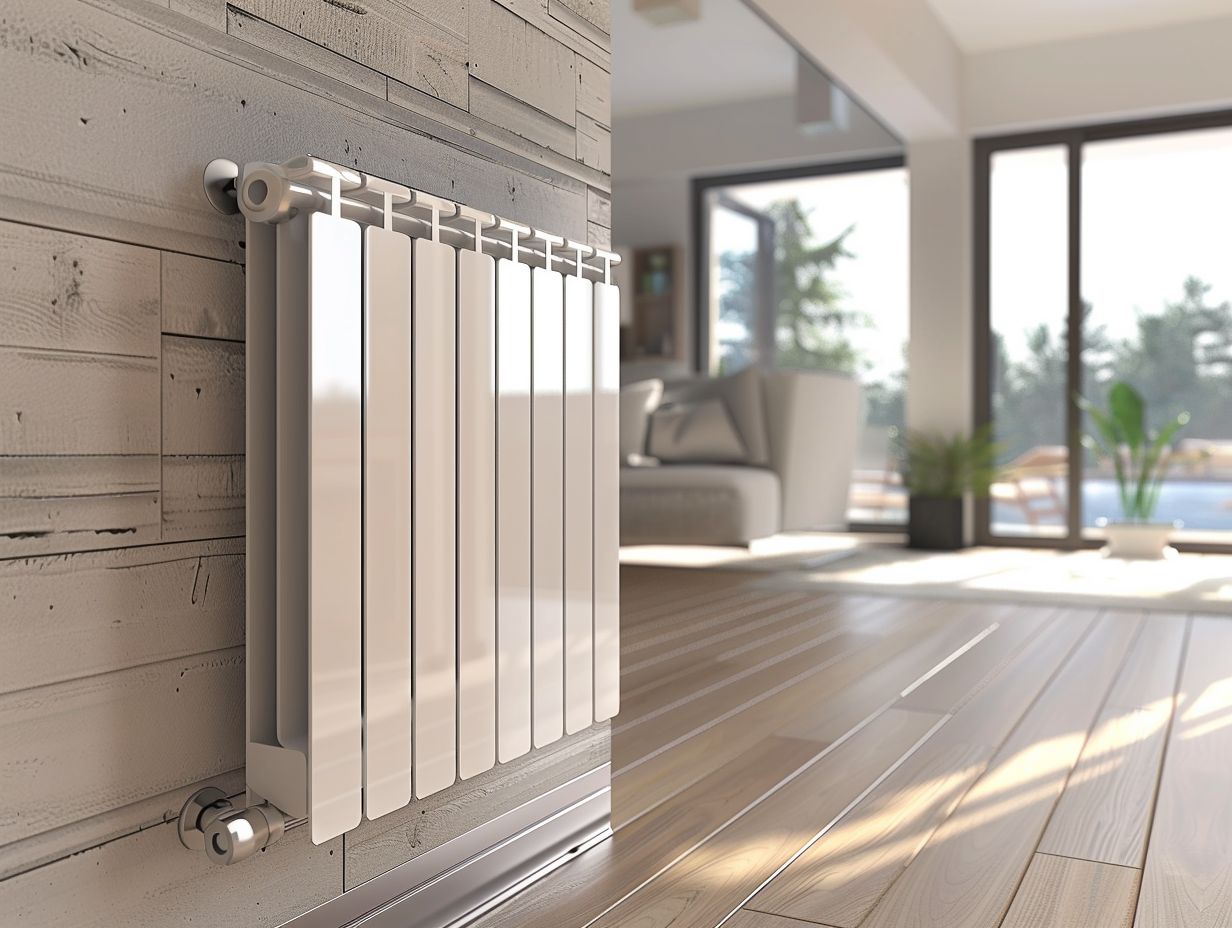
The design and aesthetic appeal of contemporary radiators play a significant role in enhancing the overall look and feel of a room. Positioning the radiators strategically and dressing them up to complement the room’s decor can transform them from mere heating elements to stylish focal points.
Regarding interior aesthetics, designer radiators serve as both functional heating sources and visually striking elements that can elevate the room’s ambience. Placing radiators under windows, behind furniture, or integrating them into built-in features like alcoves can create a seamless and cohesive design.
To further enhance their integration, consider using radiator covers, decorative screens, or painting them in a colour that matches the walls or contrasts with the decor for a personalised touch. This attention to detail ensures that radiators blend harmoniously into the overall decor scheme, enhancing the room’s visual appeal.
Installation Process for Contemporary Radiators
The installation process for contemporary radiators requires a series of precise steps that demand attention to detail. To ensure a successful installation, it is imperative that you follow a comprehensive guide with detailed instructions and have all the necessary tools and materials readily available.
First and foremost, it is essential to gather all the tools and materials required for the installation. These may include mounting brackets to securely attach the radiator, a cordless screwdriver for convenient fitting, and PTFE tape to seal joints and prevent leaks.
Once you have all the tools and materials in place, begin by identifying the appropriate position to mount the radiator and marking the fixing points on the wall. Use a spirit level to guarantee that the radiator will be perfectly straight once it is installed.
Next, proceed to firmly attach the brackets to the wall, ensuring that they align precisely with the marked points to provide stability during the installation process.
Tools and Materials Needed
- The first step towards a successful installation of contemporary radiators is gathering the necessary tools and materials. Essential items include an adjustable spanner, rad spanner, masonry bit, and other tools specifically designed to facilitate the fitting process.
- The adjustable spanner is crucial for tightening and loosening nuts to securely attach the radiator. Meanwhile, the rad spanner, which is designed for valves and bleeding screws, ensures accurate fitting without causing damage to essential components.
- A masonry bit plays a significant role in drilling into walls to firmly mount radiators. Tools like a spirit level are essential for ensuring proper alignment, resulting in a professional finish. Utilising these specialised tools will streamline the installation process, reduce the likelihood of errors, and guarantee that the radiators are installed efficiently.
Step-by-Step Guide
- When installing contemporary radiators, following a step-by-step guide is crucial for ensuring a successful outcome. Begin by preparing the wall and marking the centre line, then proceed to fitting the brackets and positioning the radiator. Each step in the installation process is essential for both functionality and aesthetics.
- The first critical step in the process is securely installing the brackets. Use a level to ensure they are straight and positioned at the correct height. Once the brackets are in place, proceed to position the radiator on them, ensuring it sits evenly. Checking alignment with the centre line is crucial to achieve a balanced look. Take the necessary time to make any adjustments needed to achieve symmetry.
Paying close attention to these details will not only enhance the performance of the radiator but also contribute to the overall visual appeal of the room.
Maintenance and Care for Contemporary Radiators
Proper maintenance and care are essential to ensure the longevity and efficiency of contemporary radiators. You need to engage in regular cleaning, troubleshoot common issues, and provide prompt care in the event of malfunctions to keep your radiators running smoothly.
Regular cleaning should involve wiping down the radiator surfaces with a damp cloth to eliminate dust and debris that could impede heat flow. Additionally, hoovering around the radiator to prevent dust buildup and checking for any leaks or corrosion are crucial steps to take.
When troubleshooting common heating issues, make sure to inspect the thermostat settings, bleed the radiators if necessary to release trapped air, and confirm that the valves are fully open. It is imperative to address malfunctions promptly in order to prevent further damage and maintain the optimal performance of radiators over time.
Cleaning and Troubleshooting Tips
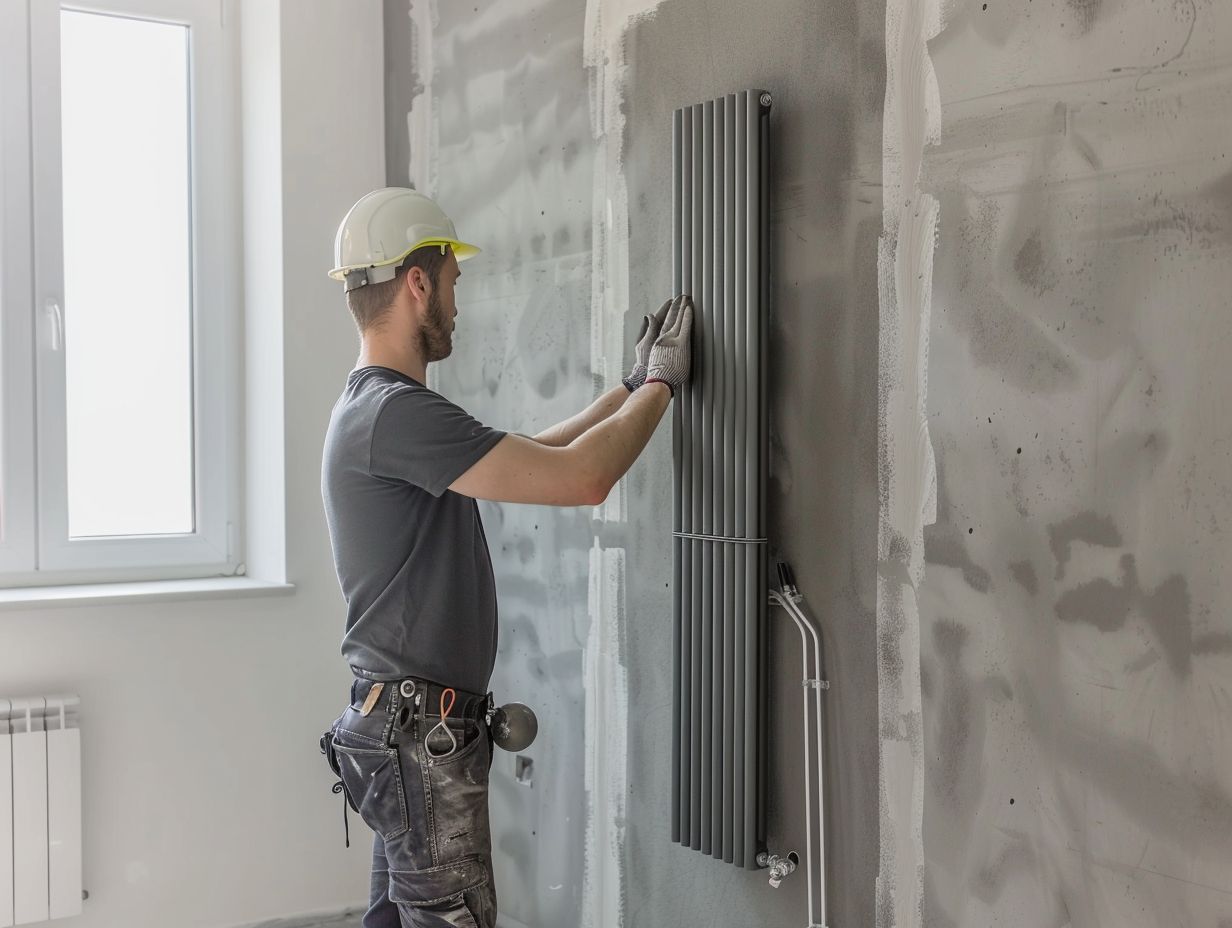
Maintaining contemporary radiators in optimal condition involves essential tasks like cleaning and troubleshooting. To address common issues and ensure efficient operation of your heating system, it is important to utilise tools such as O-rings, brown plugs, and PTFE tape.
To prevent dust and debris build-up that can decrease efficiency and lead to costly repairs, it is recommended that you regularly clean your radiators.
During maintenance routines, be sure to inspect O-rings for any signs of wear and tear, and replace them as needed. Sealing any leaks in the radiator connections with PTFE tape can help maintain optimal heat distribution throughout your home.
If you observe inconsistent heating or cold spots in your home, bleeding the radiators by releasing trapped air is a common method to resolve the issue and restore proper functionality.
Benefits of Choosing Contemporary Radiators
Opting for contemporary radiators can provide you with a variety of advantages, such as improved energy efficiency, cost savings on heating bills, and enhanced design elements that enhance the overall aesthetic appeal of your interior spaces.
These modern heating systems are specifically engineered to evenly distribute heat throughout a room, ensuring a consistent and comfortable temperature. Incorporating features like programmable thermostats and smart technology, contemporary radiators offer precise control over heating settings, which leads to reduced energy wastage and lower utility expenses.
Additionally, the sleek and stylish designs of these radiators can add a touch of sophistication to any living space, creating a modern and visually appealing atmosphere.
Energy Efficiency and Cost Savings
When considering contemporary radiators, you will find that their energy efficiency is a standout feature, providing substantial cost savings for homeowners.
To accurately assess heating requirements and select radiators that optimise energy usage while reducing heating expenses, utilising tools such as the BTU Calculator is recommended.
The focus on energy efficiency not only impacts your financial savings but also benefits the environment.
By choosing radiators that align with the energy efficiency needs of a space, you can lower overall energy consumption, leading to a more environmentally friendly home. Efficient heating systems also enhance comfort levels by maintaining a consistent and enjoyable temperature in the living space.
The BTU Calculator serves as a valuable tool in this decision-making process, give the power toing individuals to make informed choices regarding their heating solutions based on precise calculations of their heating needs.
Enhanced Design and Functionality
Modern radiators offer a wide array of design possibilities that extend beyond mere functionality, giving you the opportunity to personalise your heating solutions to complement your interior decor preferences.
Leading brands such as Trads offer a diverse selection of chic radiator designs that effortlessly blend form and function.
These cutting-edge radiator options cater to a range of interior themes, from contemporary minimalism to traditional sophistication, ensuring that there is an ideal match for every type of home décor.
Social media platforms like Facebook and Twitter play a crucial role in showcasing these design trends and inspiring homeowners to consider unconventional radiator choices that harmonise style with utility.
By following influential design accounts and engaging with online interior design communities, you can stay abreast of the latest trends and make well-informed decisions regarding your radiator selections.
Frequently Asked Questions
What are the installation considerations for contemporary radiators?
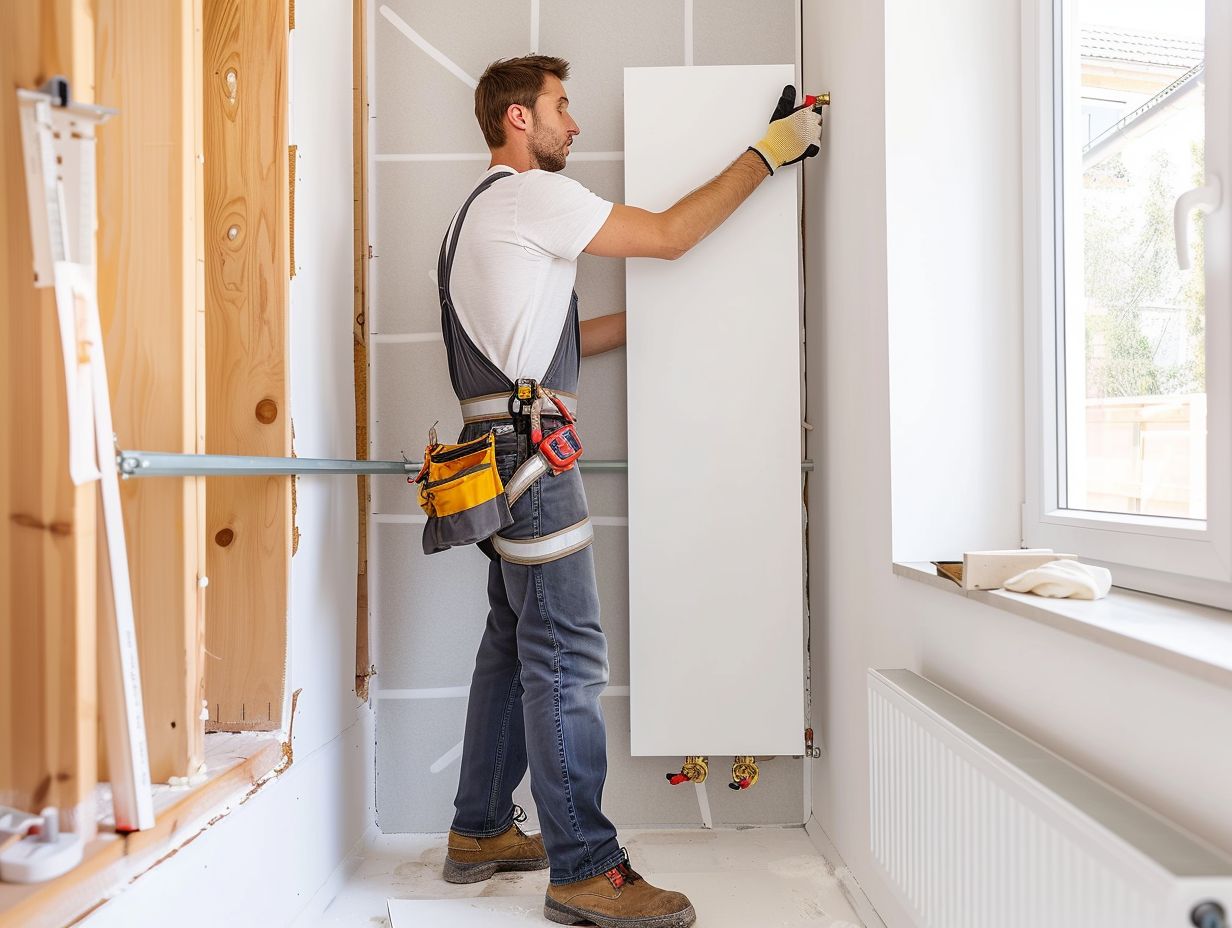
There are several important factors to consider when installing contemporary radiators, including placement, size, and compatibility with your heating system.
Do contemporary radiators require any special tools or equipment for installation?
The tools and equipment needed for installing contemporary radiators will depend on the specific model and design. However, most installations will require basic tools such as a level, drill, and screwdriver.
Can I install contemporary radiators myself, or do I need to hire a professional?
While it is possible to install contemporary radiators yourself, it is recommended to hire a professional for the best results. Improper installation can lead to inefficiency and potential damage to your heating system.
What type of flooring is suitable for installing contemporary radiators?
Contemporary radiators can be installed on a variety of flooring types, including tile, wood, and carpet. However, it is important to ensure that the flooring is strong and stable enough to support the weight of the radiator.
Are there any safety considerations I should keep in mind when installing contemporary radiators?
Yes, it is important to follow all safety guidelines when installing contemporary radiators. This includes ensuring proper ventilation, keeping flammable objects at a safe distance, and following manufacturer instructions for handling hot surfaces.
What are some common mistakes to avoid when installing contemporary radiators?
Some common mistakes to avoid when installing contemporary radiators include incorrect placement, improper sizing, and not following manufacturer instructions. It is also important to avoid damaging your heating system or causing any potential safety hazards.

